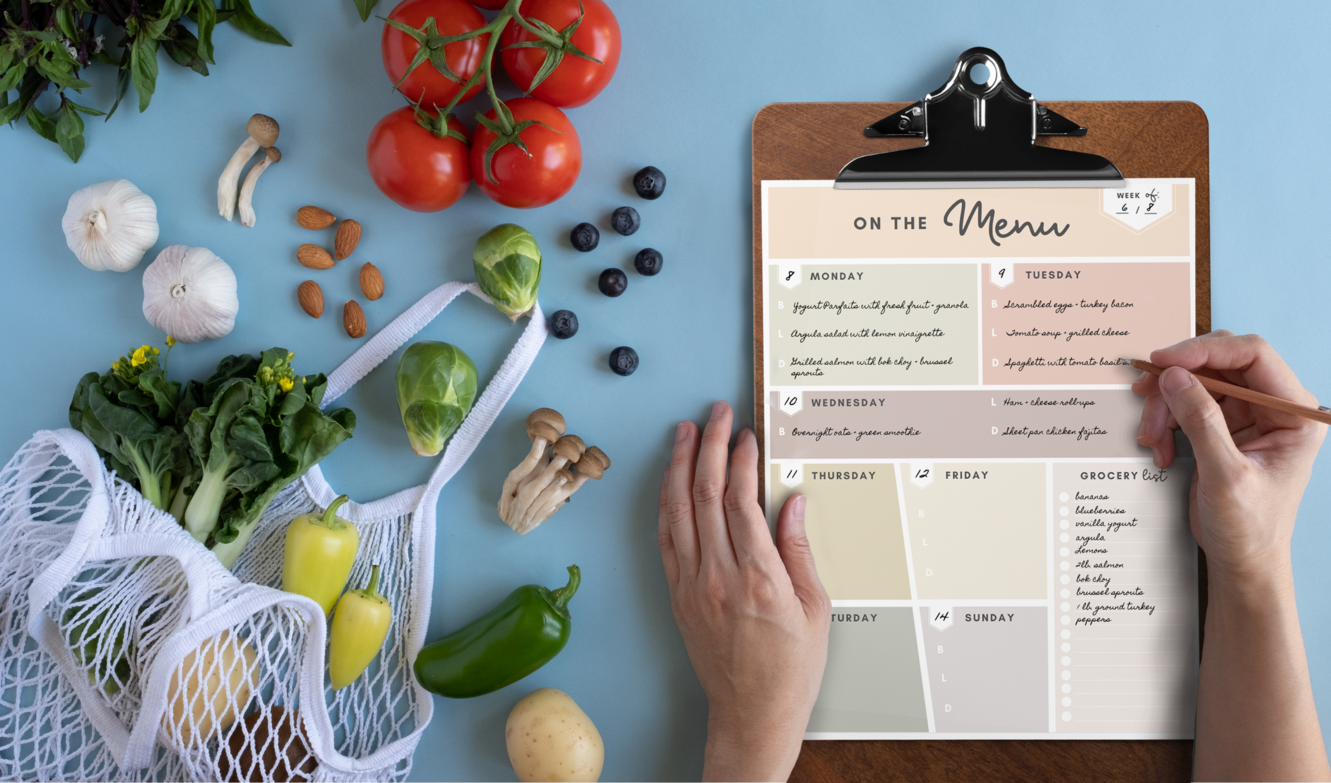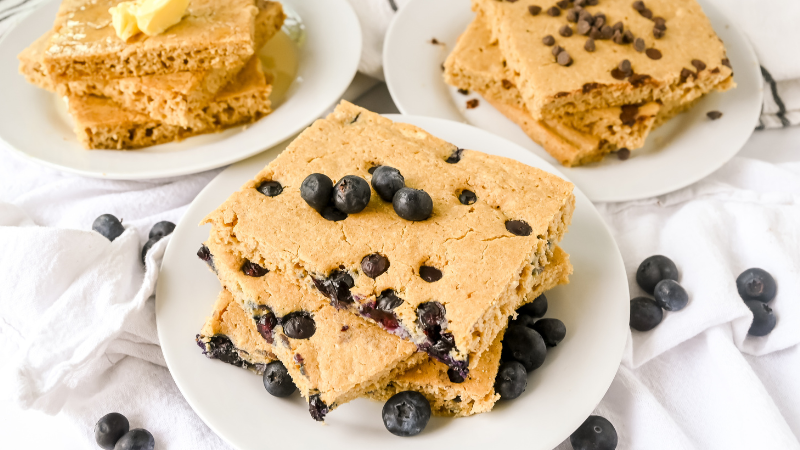Whether you’re a total beginner, or have tried to menu plan for your family before, these easy meal planning tips will save you time, money and stress. We’ve even created a free printable meal planning template to help!
We often hear from our community that getting healthy, nutritious meals on the table for their family is one of the hardest challenges they face. Today’s busy schedules often create only a small window of time to prep and cook a meal, and if you don’t have a plan in advance, trying to pull together dinner for the whole family can become extremely stressful.
Luckily there is a solution: meal planning. A well thought out meal plan can help you and your family eat healthier, while saving you time and money. And we’re here to help you make a start!
We’ve partnered with our friends at Guiding Stars, to bring you the best meal planning tips and tricks for busy families. This includes using their simple 3-star product ratings at the grocery store to easily pick more nutritious foods, and our exclusive Weekly Meal Planning Template (that you can download here for free!) to keep all the details in one place.
Although it may seem daunting at first, if you follow our menu planning tips and use our free printable menu planner, you’ll be able to develop a habit that will serve you and your family well during what are arguably the busiest years of your life.
PIN for when you want to begin meal planning and need a free weekly menu planning template!
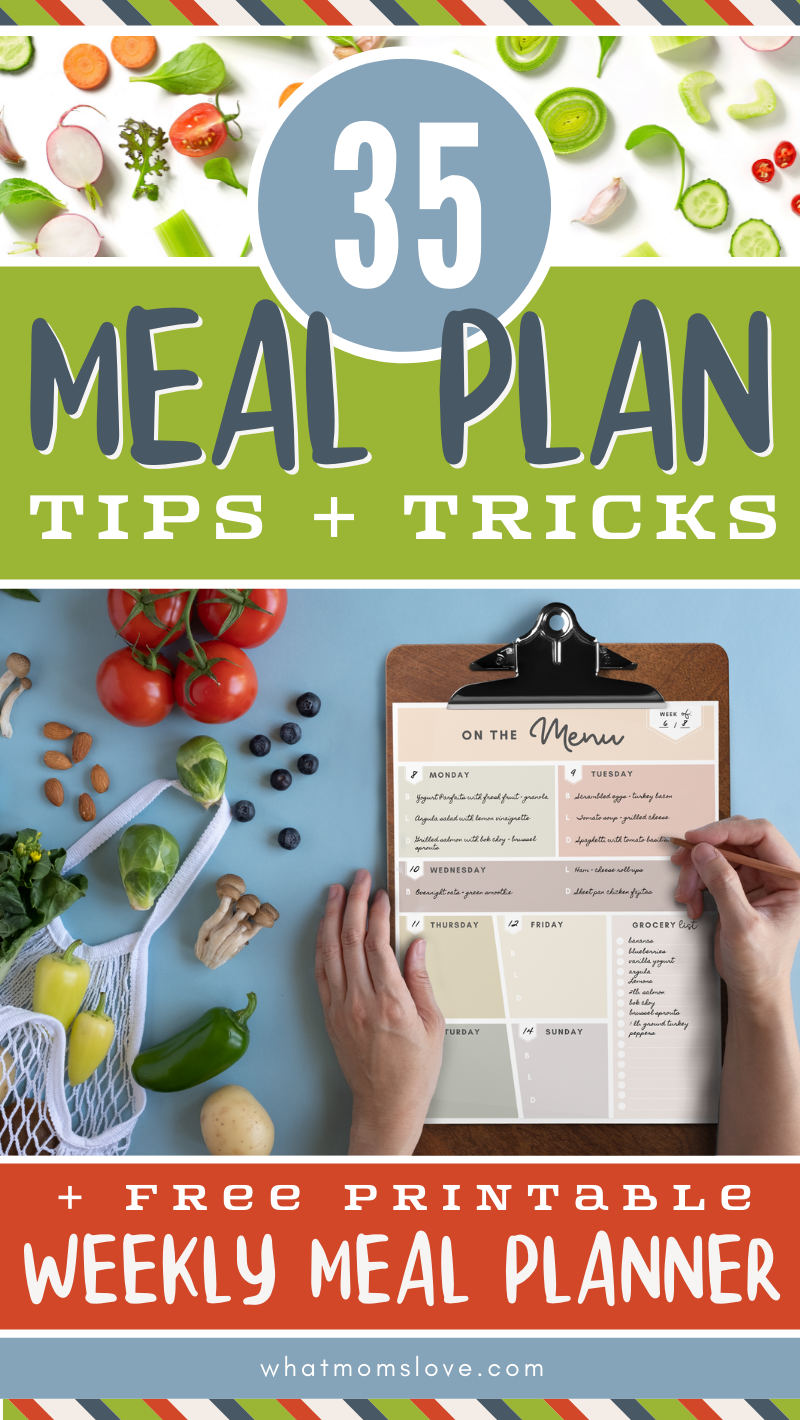
HOW DO I BEGIN MEAL PLANNING?
This is a question we often hear from parents who have never tried meal planning before. The truth is, there’s no right or wrong way to start menu planning, you simply need to dive in head first and find the way that works best for you and your family.
Read through our meal planning tips below and formulate a plan that seems manageable for you. Decide when you’ll start (write it on your calendar to make it official!), what day you’ll do the majority of the planning, and what day you’ll go grocery shopping.
But remember, you don’t need to start with a perfect 3-meal a week plan – you just need to start!
Which leads us to our first tip:
Start Small:
It may feel a little daunting if you’ve never created a meal plan before, but try starting by simply planning out a few days’ worth of dinners, to get into a routine that feels right for you. Then slowly work your way up to menu planning for 7 days of dinners, then add in lunch and breakfast, until you’re planning for 3-meals-a-day for an entire week.
By starting small, you’ll be less overwhelmed to begin, and more likely to stick with it – because we promise, once you get the hang of it, it can be life changing!
THE BEST TIPS FOR MEAL PLANNING
When polling our community, many asked “what are the basic steps of meal planning?” and “how do I create a simple meal plan?”. That’s why we decided to pull together these easy menu planning tips and tricks all in one place.
Set a Time to Plan
One of the keys to meal planning success is to carve out a time for planning every week. Some people like to do it over the weekend so they are ready to hit the work/school week with a solid plan in place. Others prefer to do it the day before they go grocery shopping for the week.
Whatever time you decide, put it on your calendar so it becomes a priority that can’t be missed. During this meal planning time you’ll follow the steps below and fill-in our weekly menu planner and grocery list. This could take as much as an hour at first (especially if you need time to browse through different recipes), but eventually as you fall into a good routine, it shouldn’t take long at all.
Use Our Free Printable Weekly Meal Planner to Write Down Your Menu
Simply by putting your meal plan in writing makes it much more likely that you’ll follow through, and it also makes that “Moooom, what’s for dinner?” question pretty simple to answer!
So first things first, grab our Weekly Meal Planning Template – it’s a free download that we’ll send directly to your inbox in easy-to-print PDF format. Simply fill out the box below:
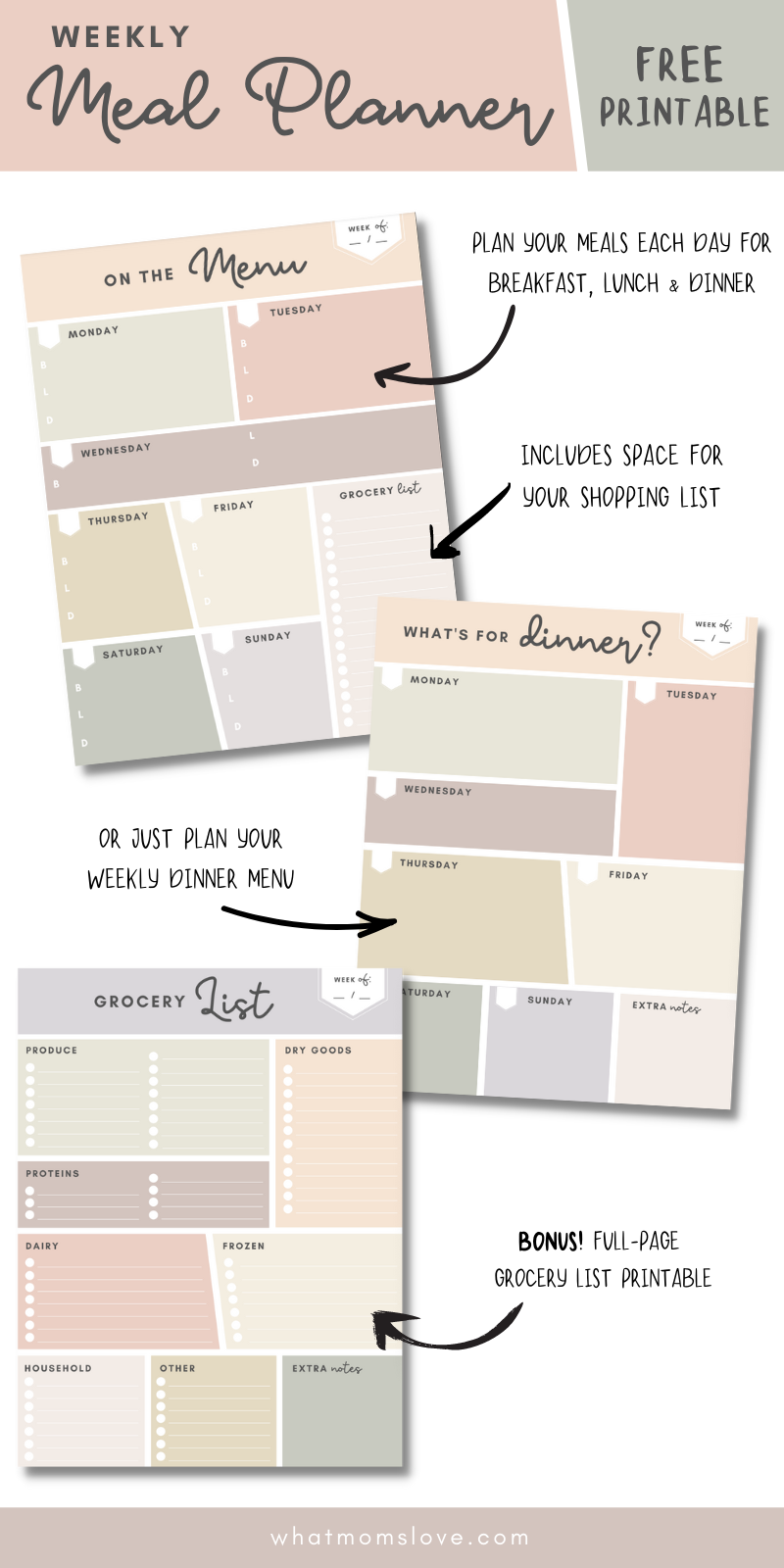
The PDF includes a few different variations so you can use the ones that work best for you:
- “On the Menu” Weekly Meal Planner Template with 3-meal breakdown (B – breakfast, L – lunch, D – dinner) + Grocery List
- “On the Menu” Weekly Meal Planner Template with 3-meal breakdown (B – breakfast, L – lunch, D – dinner) + space for notes (no grocery list)
- “What’s for Dinner?” Weekly Meal Planner Template + Grocery List (use this one if you just want to plan your dinners, not other meals)
- “What’s for Dinner?” Weekly Meal Planner Template + space for notes (no grocery list)
- Grocery Shopping List – if you’d prefer to keep your grocery list separate, use this template to organize your shopping!
You’ll also find 2 different color schemes: neutrals and pastels. Pretty enough to hang on your fridge or family command center for all to see!
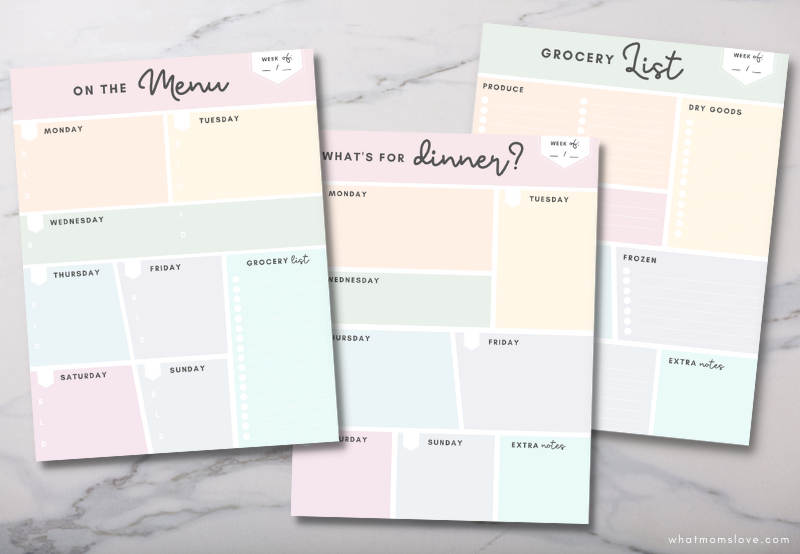
- Look at Your Schedule: Start by looking at your schedule for the upcoming week to get a sense of what your busiest days will be. Do your kids have sports or school activities around dinnertime? Will your need to work late any evenings? Is there a day where you have more meetings or after-school commitments? Earmark these busy days that you know will be more stressful and time-strapped for quicker, easier meals (think set-it-and-forget it Instant Pot or Slow Cooker dinner, or reinventing leftovers – more on this later!).
- Slot in Family Favorite Recipes and Easy Weeknight Meals: After looking at your weekly schedule, start adding in some of your easy go-to meals – the ones you can quickly make without the need to look at a recipe. It’s a good idea to ask your family if they have any requests too – we find that kids are far more likely to eat if they help choose the meal!
- Add in 1-2 New Recipes a Week: Once you’ve slotted in some of your favorite meals, try adding in 1 or 2 new recipes you’ve been wanting to try. It’s so easy to get stuck in a rut with family meals, so by pushing yourself to make something new, you’ll not only feel proud of yourself for branching out, but you’ll also be helping your kids expand their palettes with new flavors as well.
If you’re in need of some recipe inspiration, browse blogs, search on Pinterest, or go through magazines or cookbooks. Print or clip any recipes you want to try and place them in a folder that you can look through when planning. We always suggest the recipes from Guiding Stars as they have all been evaluated for nutrition, so you know that you’ll be making a better-for-you meal for your family. - Create a Balanced Week of Nutrition: This is so important! While you should have no guilt in grabbing some frozen chicken nuggets and fries and calling it dinner every once in a while, the beauty of meal planning is that you can look at the week as a whole to ensure that your kids (and you!) are getting a healthy balance of nutrients.
So while planning for the week, take mental notes to ensure that each of the food groups are represented in your plan and focus on healthy whole foods like fruits, vegetables, whole grains, proteins and healthy fats. Try to limit added sugar, excess salt and processed foods.
- Keep It Simple: Remember, the meals you plan needn’t be a gourmet 3-course extravaganza! Afterall, the whole point of menu planning is to make things less stressful. Think easy, healthy meals that include a protein, vegetable and grain. A simple protein + a side salad works just fine. Same goes for breakfast – these smoothie recipes are quick and easy, but packed with nutrition!
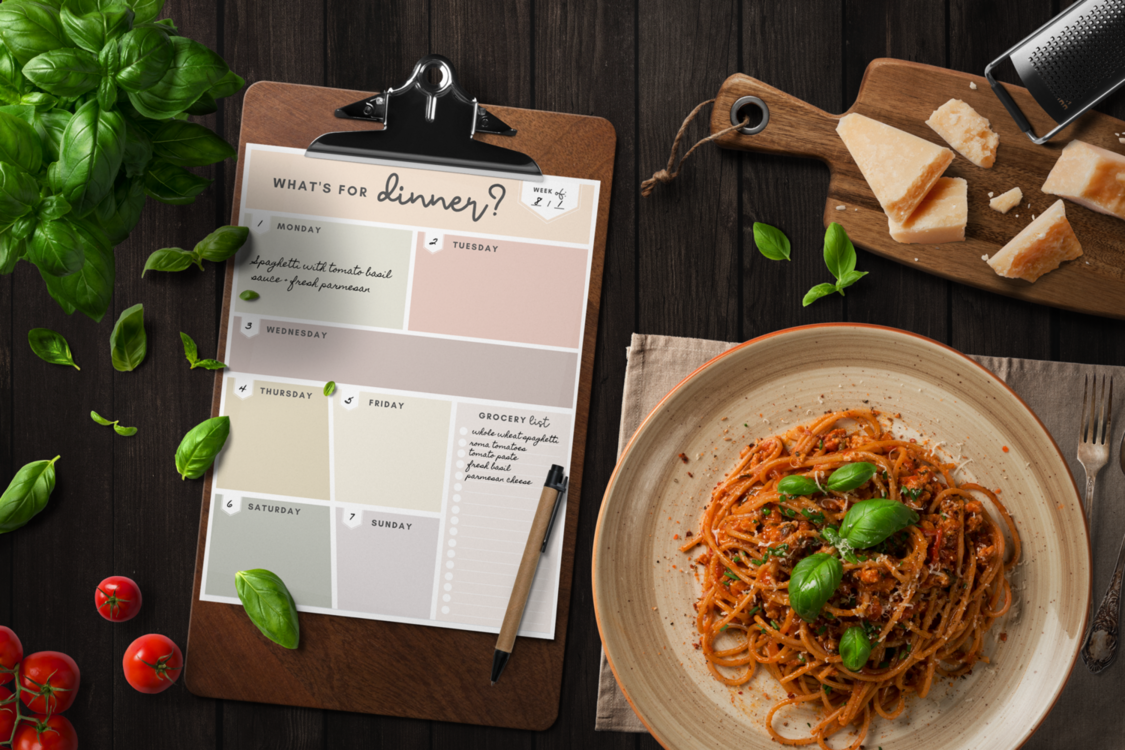
- Check the Weather / Think Seasonally: Look at the forecast for the upcoming week and see if that inspires your menu. Cold and rainy on Monday? How about a nice warm bowl of soup. Hot and humid on Thursday? A crisp, refreshing salad might be nice. Also consider what produce is currently in season – don’t miss things like sweet corn, cherries and fresh berries in the summer, or pumpkin and cranberries in the Fall.
- Create “Theme Nights”: Taco Tuesday anyone? Planning for a theme night or two is a great way to guide your weekly menu, and kids love them! Try themes like Meatless Monday, Fish Friday, Pasta Sunday or the ever-popular kid-favorite, Breakfast-for-Dinner.
- Check for Sales: Take a peek at your grocery store’s online circular to see if there’s anything on sale for the week that you can organize a meal around. Beans 2 for 1? Time to make some Chili!
- Plan for Leftovers: Make an extra-large serving of dinner to be lunch for the next day, or for a do-over meal later in the week. Making a larger batch won’t take you much additional time, but will save you 10-fold in the future.
- Repurpose Leftovers: Alternatively, instead of having the entire leftover meal as a do-over, use part of it to repurpose into a different meal. For example, use leftover roasted vegetables to make a grain bowl or salad topping. Turn chili into a topping for baked potatoes. Use extra chicken for salads and sandwiches. Get creative and you won’t feel like you’re eating leftovers at all!
- Enlist Your Family: A lot of time and energy goes into providing meals for your family – have them take some of the burden off your shoulders by enlisting them to lend a helping hand. Give your spouse or partner a day/night or two to plan. If you have older kids, teach them how to make an easy meal and then put them in charge for a night. You’ll be surprised how receptive they are to this idea – giving them that level of responsibility and trust is great for their self-confidence. Just see how proud they are putting their meal on the table! It will also give them a greater respect for the time and energy you put into planning and cooking.
- Have a Back-up Plan: Let’s face it, you can plan every meticulous detail of your weekly menu, but life happens, and sometimes you may not have the time you thought you’d have to pull together your planned meal. In these situations, having a back-up-plan will greatly help alleviate any stress. Have a few frozen freezer meals ready to grab for these inopportune moments. These can even be the pre-made kind from your grocery store. But having something on-hand is better than the stress of having nothing!
- Give Yourself a Night Off: It’s OK to plan for eating out or take-out too! Having a pizza night at the end of the week gives you a day off to plan for the following week. And we find that it always feels better when a night off from meal-making is planned – it’s not only something to look forward to, but will lessen the guilt and stress that comes with the it’s-too-late-and-im-too-tired-to-make-a-meal decision.
Make Your Grocery List
After you’ve filled out the Weekly Meal Planning printable with your meals, it’s time to make your grocery shopping list.
Planning the shopping part of your weekly meals is a simple idea that makes a BIG difference. Not only does it stop unnecessary purchases at the store (which saves you money and lessens your food waste), but it saves you from multiple trips to the store for forgotten ingredients.
And once you have your weekly meal plan all set, it shouldn’t take much time at all to pull together your grocery list.
- Write it Down: Don’t rely on your memory! We’ve even provided a special place on your Weekly Meal Planning printable for your grocery list, or if you prefer a more organized list, use our full-page version for super simple shopping.
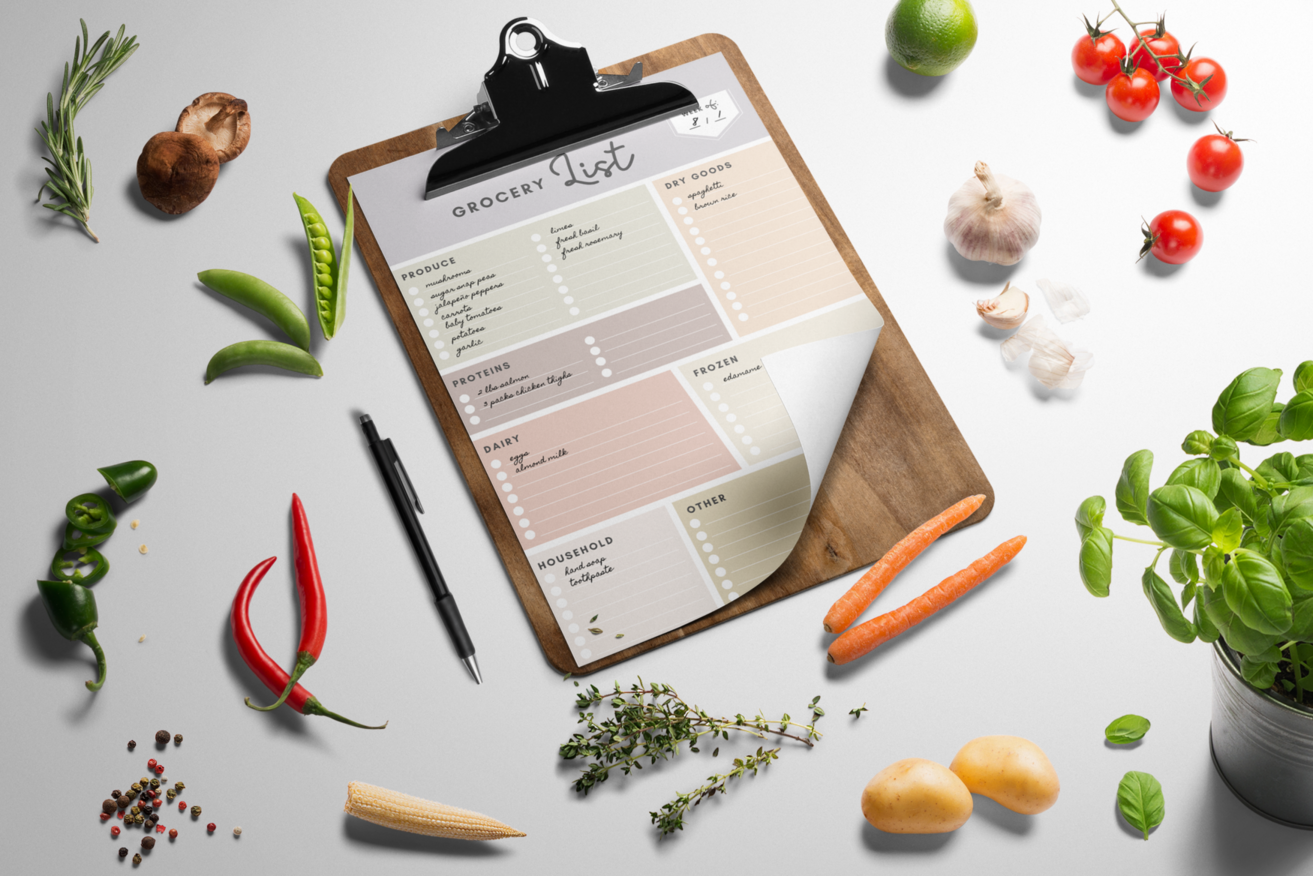
- Keep it Nutritious: Use the Guiding Stars Food Finder app to find the most nutritious options for everything on your list. Making a pasta dish for dinner? Search “pasta” and “tomato sauce” on the app to see which brands/variety gets the most stars. Record these items on your list so you know exactly what to look for at the store (this is especially helpful if your grocery store doesn’t yet have the Guiding Stars on the shelf tags). By following the Guiding Stars you can ensure you’re getting more of the attributes that support good health, and less of those we should limit.
RELATED: Want more nutritious snacks for your kids? Check out Easy Snacks for Kids: Top Ideas for a Healthy Lifestyle
- Take Inventory: As you’re making your shopping list, remember to go through your pantry, fridge and freezer to make sure you don’t buy things you already have.
- Keep a Well-Stocked Pantry: Have a good supply of staples like brown rice, whole-wheat pasta, canned or dried beans, broth, oils and spices on-hand so your list won’t be as overwhelming.
- Take Some Short Cuts: Grabbing a whole rotisserie chicken that you can simply shred and have available for tossing on salads, sandwiches, or incorporating into a dinner-time recipe can save you a ton of time and energy. Many grocery stores also have pre-cut veggies and fresh fruits that can eliminate a ton of prep time in the long run. Consider these short-cut options as you create your shopping list.
Go Shopping
Once you have your shopping list for the week (or for however long you’ve planned for), head to the store to check everything off.
Remember to look for the Guiding Stars to help guide you to the most nutritious choices. These can be found on shelf tags, prepared food labels and/or store-brand packaging in participating grocery stores.
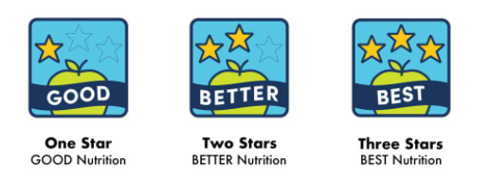
If you don’t see them at your local store, you can always download Guiding Stars free mobile app where you can search for food items, and easily see which ones rank on their good-better-best scale.
Prep Food in Advance
Although this tip goes above and beyond meal planning, if you’re able to find some “down time” to prep some of your food in advance, you’ll reap the rewards later on when the going gets tough!
We find the best way to do this is to get into the habit of doing your food prep for the upcoming week once you get back from the grocery store. This can be as simple as washing and drying your produce, or go as far as chopping vegetables, spiralizing zucchini, marinating proteins, making salad dressing or browning ground beef.

This is a great task where you can enlist your family to help. Give everyone a special job and make it quality time together instead of a chore.
Batch Cooking
You can even consider “batch cooking” where you prepare a week’s worth of meals on just one day. For this you’ll need to dedicate a few solid hours of your weekend to prep and cook, but you can then enjoy the fruits of your labor when all you have to do is re-heat your meals during the busy week!
Make it Enjoyable
Lastly, meal planning and preparing doesn’t have to be something you dread. Consider playing music while you plan, or listen to a podcast or audiobook while you unload groceries and prep. Remember that the end result is worth the extra time and effort!
We hope these menu planning tips will help your family enjoy more fresh food and healthy, homemade meals together, while lightening the load on your shoulders each and every week.
If you haven’t already downloaded the free Weekly Meal Planning printable, grab it here:

